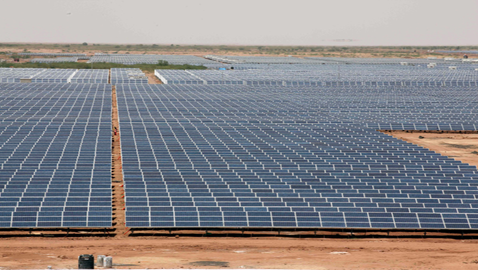
Gujarat has the highest potential for renewable power generation among states, reveals the ‘Energy Statistics 2015’ released by Ministry of Statistics and Programme Implementation.
As on March 31, 2014, India’s total potential for renewable power generation was estimated at 1,47,615 MW. Out of the total potential, wind power accounted for 69.6 per cent or 1,02,772 MW, small hydropower accounted for 13.38 per cent or 19,749 MW, biomass power accounted for 11.88 per cent or 17,538 MW and bagasse-based cogeneration accounted for 3.39 per cent or 5,000 MW.
As per the geographic distribution of the estimated renewable power potential, Gujarat’s share stood at 25.04 per cent or 36,956 MW. The other states with high potential for renewable power generation were Karnataka (13.08 per cent share or 19,315 MW), Tamil Nadu (11.17 per cent or 16,483 MW) and Andhra Pradesh (11.16 per cent or 16,476 MW).
The total installed capacity of grid interactive renewable power as on March 31, 2014, was 31,692.18 MW.
Out of the total installed generation capacity of renewable power, wind power accounted for about 66.69 per cent followed by biomass power (12.66 per cent) and small hydropower (12 per cent). Tamil Nadu had the highest installed capacity of grid connected renewable power (8,070.26 MW) followed by Maharashtra (5,630.20 MW) and Gujarat (4,430.20 MW), mainly on account of wind power.
Out of the 47.52 lakh biogas plants installed in the country, 8.56 lakh plants were in Maharashtra. Other states with large number of biogas plants included Andhra Pradesh, Karnataka, Uttar Pradesh and Gujarat, each with more than 4 lakh biogas plants. Out of the 1,221.26 MW solar cookers installed, 824.09 MW were installed in Gujarat and 222.9 MW in Rajasthan. As on March 31, 2013, a total of 1,418 water pumping wind mills systems had been installed and 7,971 remote villages and 2,183 hamlets electrified.
The publication titled ‘Energy Statistics’ is brought out every year by the Central Statistics Office under Ministry of Statistics and Programme Implementation. The current edition is 22nd in series. It includes the latest data on reserves, installed capacity, potential for generation, production, consumption, import, export and wholesale price of different energy commodities.












